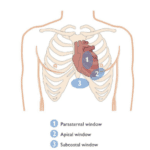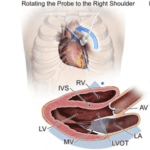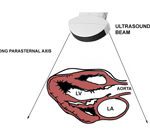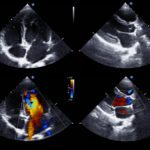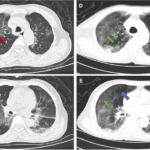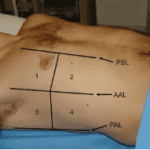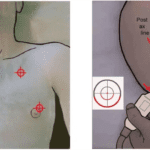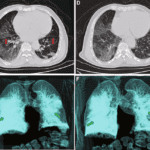Submitted by Dr. M Ravi Krishna
A 52-year-old female who is a known case of CKD-5D (Rt. IJV permcath), DM, HTN, OSAS, Moderate Mitral regurgitation sec. to MVP presented with abdominal pain of 4 days which on evaluation was found to be appendicular perforation. The patient soon developed septic shock and patient underwent exploratory laparotomy.
On post operative Day-1 when the patient was undergoing heparin free sustained low-efficiency dialysis (SLED), the patient developed absence seizures followed by sudden onset tachycardia and worsening of hypotension.
Bedside POCUS showed evidence of a large freely mobile thrombus in RA (type 3) with ball valve effect causing significant swings in BP (SBP 240 to 40) due to intermittent obstruction to vasopressor infusions. There was real time progression of RV & pulmonary artery size with clot in transit. With imminent cardiac arrest, the patient was immediately shifted to the Cath lab with push boluses of epinephrine, and she underwent aspiration thrombectomy and CGDT.
Post thrombolysis period was complicated by significant autonomic disturbances and persistent pulmonary hypertension. CTPA on Day 3 post CGDT was suggestive of residual bilateral pulmonary emboli with bilateral wedge infarctions. MRI brain was normal.
The patient was again evaluated with POCUS at bedside due to disproportionate pulmonary hypertension and was found to have a 6.5 mm PDA which developed likely because of massive pulmonary thromboembolism. The patient gradually weaned off vasopressors and was shifted to the inpatient service and was discharged on the 13th day of hospitalization with BIPAP support.
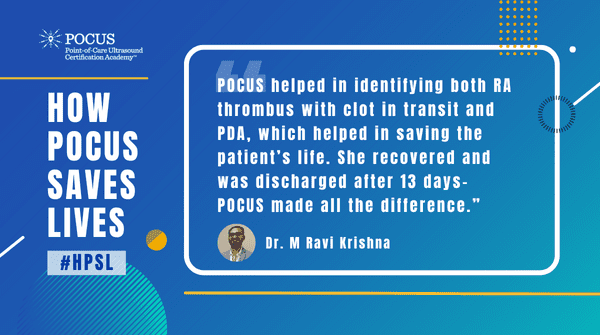
POCUS helped in identifying both RA thrombus with clot in transit and PDA which helped in saving the patient’s life.
Has POCUS impacted the care you provided to a patient? Has it altered the course of treatment or helped you to diagnose?
We want to hear your stories!





